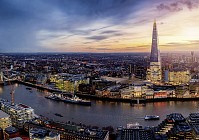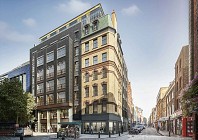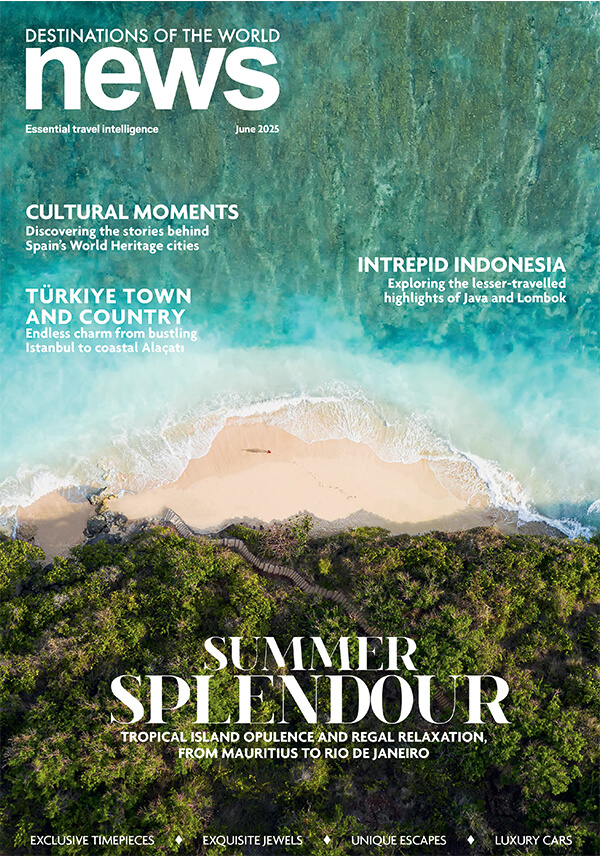It is 1950 and a five-year-old boy is happily watching the Oxford and Cambridge boat race, his legs dangling over the bank of the River Thames. One of his shoes falls in, and this single event will change his entire life dramatically.
Philip Morrell, too scared to go home and tell his clinically depressed mother that he had lost his shoe, found himself wandering the streets of London. The police picked him up and placed him in a care home, where he stayed for the next 10 years.
Unable to read or write, Philip’s fortune depended on the good will of others, from the Spanish family who took him into their home and taught him to speak their language, to Thomson Holidays, for giving him the job that would set him on the path of his future career.
Philip took time out from the Queen’s Diamond Jubilee preparations to talk to Destinations of the World News about how his yacht, The Spirit of Chartwell, was chosen as the Royal Barge for the Thames Diamond Jubilee Pageant.
So, early life was very tough?
I grew up in Hammersmith, London. My mother was evacuated during the war with her children. When she returned to find her husband had found someone else, she suffered a breakdown. She found love with another man and he fathered me, but she was still manically depressed, so I was allowed to roam the streets, even at the young age of five.
The Oxford and Cambridge Boat Race was a day that will always stand out. I dropped a sandal in the mud and couldn’t face going home to my mother. The police picked me up and sent me to a care home. I was with Barnardo’s [UK charity for homeless children] for 10 years.
I was sent to many foster homes during my youth but I was very unlucky with the chosen families. I remember once being sent up to Scotland. I arrived in Edinburgh at the age of seven only to find out the “order” had been cancelled. The “order”, like I was something they had bought and no longer wanted.
At 15 they give you a welfare officer who is in charge of finding you a job and somewhere to live. Because of my mixed-up childhood, I had many difficulties reading and writing. I was given the choice of being a carpenter, bricklayer or stonemason. I decided stonemasonry seemed a little more creative than the others, so I chose this.
When did you get your first break?
I met a Spanish boy while working at the stonemasonry and we ran away together. His family hid me in Notting Hill, where I learned Spanish, which in turn helped me get a job as a holiday representative in Spain when I was old enough.
I worked there for a few years and was then called back to London to work in the head office of Thomson Holidays. The company had just started, and there were only 18 of us. I was 22 and in charge of all operations worldwide. I was required to scout out new places for the tour operator to send holidaymakers.
Where did you travel with Thomson Holidays?
I managed to break the Mongolian and Russian markets, but I was really after China. I had a dream of connecting the railways of Europe with those in Russia and then into China, all in one trip. My boss at Thomson wasn’t really interested – I guess this is how my own company, Voyages Jules Verne, started.
Tell me about your own company?
We were one of the first companies to start off-the-beaten track travel. We managed to start the London-to-China railway line and this is what made us. We had hundreds of bookings from the outset. We launched the inaugural train voyage to China on February 27, 1979. In fact Michael Palin was on that voyage as a passenger, writing a piece for Conde Nast.
Why did you sell Jules Verne Voyages?
In 1998, I sold the company to Kuoni. I believed that the world was turning to online, and this was the best option for us. I stayed with Kuoni for a few years, before finally leaving to start my next venture, which was boutique shipping.
How did you get involved in shipping?
I decided that many of the UK waterways were vastly unexplored, so I decided to find a ship that was small yet sturdy enough to go through the Caledonia canal in Scotland and then out to sea. We never found one. Instead I bought a ship, reconstructed it and called it the Lord of the Glens. It is still today the only ship that can pass through the canal.
What was your next challenge?
The Thames. The Thames is a very tricky river – it has a very high tide and very low tide that rises and falls by about 30 feet every day. It has many low bridges and very small locks. Eventually I found a boat, re-did it and launched The Spirit of Chartwell. This is the yacht being used for the Queen’s Diamond Jubilee.
How did that happen?
I actually have no idea. I was in Paris at the time. We decided to do away with the Thames cruises as it was becoming way too expensive. Also our product is all about the romance of cruising down waterways and we found in London that Londoners don’t actually have much connection with the river. In Paris though, they do. There is something very romantic about cruising along the River Seine, so we were looking at bringing the product to Paris when a member of the pageant team called me.
So you rented your boat out to the Queen?
No, we have given Her Majesty the boat for free. It is such an honour to be part of the celebrations. They took hold of it in December and will return it after the Pageant.
How does that affect your business?
Everyone is under the impression that I am some sort of Roman Abramovich-type for lending the Queen my yacht. I’m not. When we first agreed to this, the yacht was only meant to be in their care for three weeks, but now they’ve had it since December. But as I said, it is a great honour, so I really didn’t mind.
Did they change the boat?
We allowed them to do what they wanted with the yacht, but they only have four days to get it back to us after the pageant.
Did the Queen invite you aboard?
Yes, but I decided to politely decline. I wouldn’t know what to do with myself! I did nominate my children to join them on board as stewards though.












